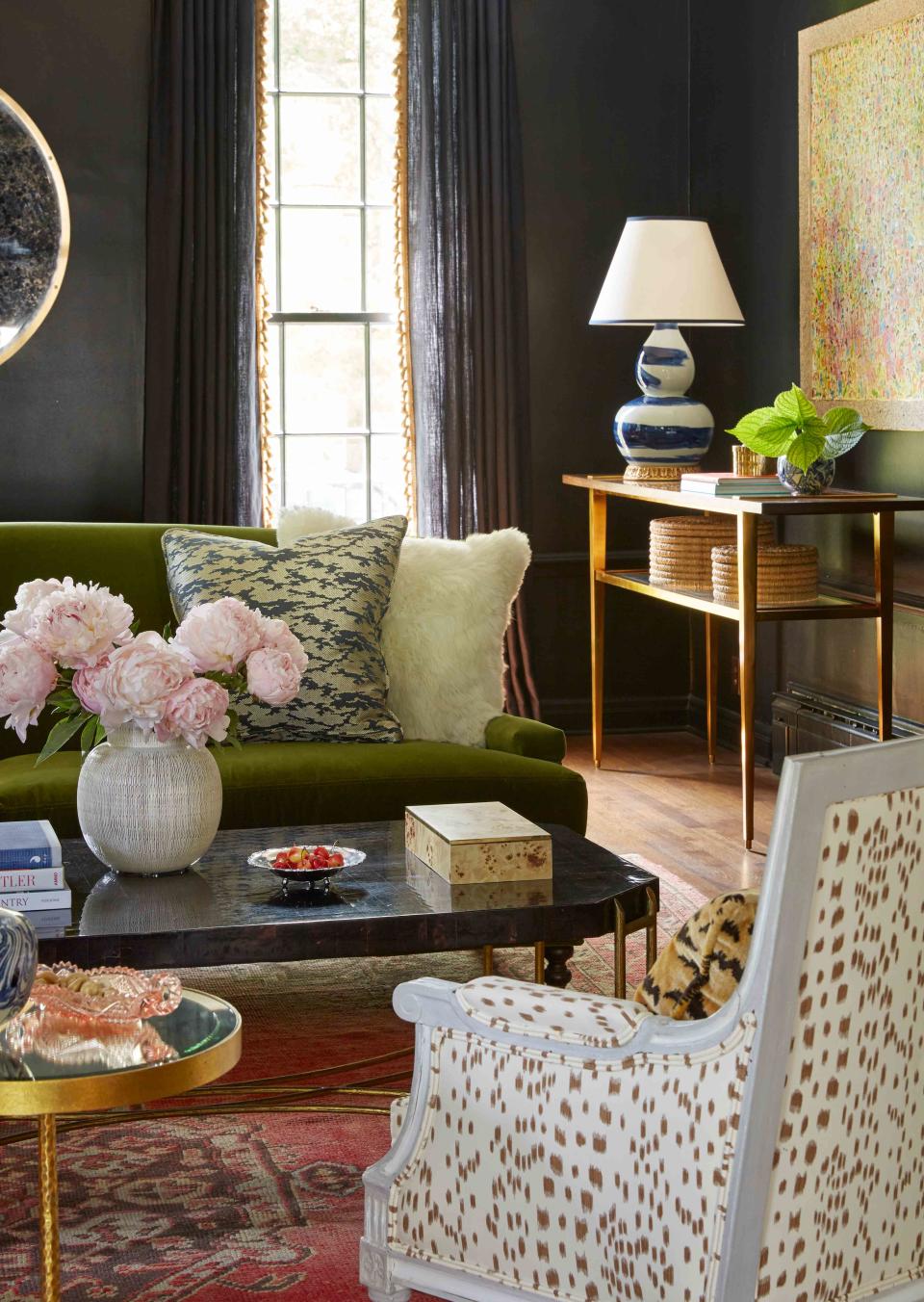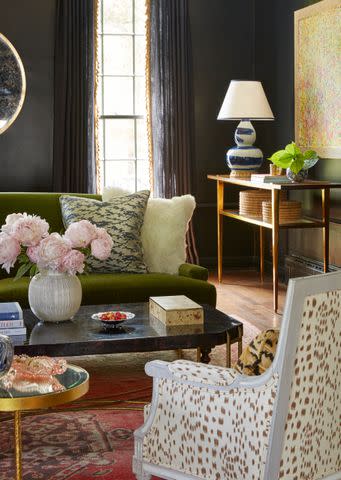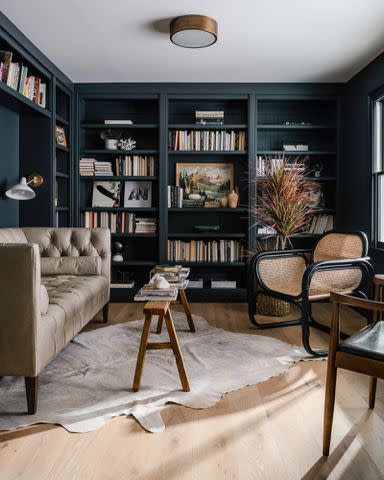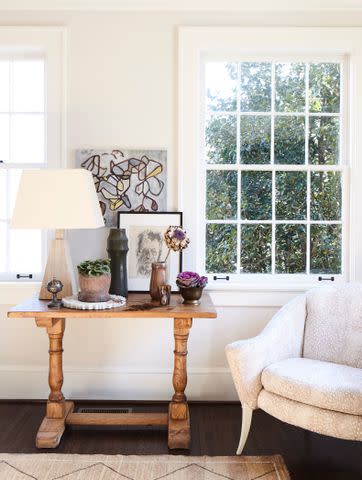What Is a Parlor? Experts Explain the History and Design Styles
From the Victorian era to modern day homes, these parlor ideas will help you make the most of yours.

Annie Schlechter
Parlor rooms, also known as reception rooms, have existed since the Victorian era. After the early 1800s, parlor rooms became a fixture in middle and upper-class American homes. They are natural gathering places for guests and families to enjoy an entertaining afternoon or evening. Since parlors reflect each family’s personality, much thought goes into furnishings and design. Decor, vintage artwork, grand pianos, and other decorative elements, such as sculptures and vases, are commonplace in today’s parlor rooms.

Annie Schlechter
Although living rooms, sitting rooms, and dens have largely replaced parlors in newly built homes, older homes still have this feature. To help you decorate your own parlor space, interior design experts explain what a parlor is, the history of the space, and how to make the most of yours with modern and timeless elements.
Related: The Hipstoric Home Decor Trend Blends Vintage Pieces with Modern Style
What Is a Parlor?
The word parlor stems from the French word parler, meaning to speak. "A parlor is a classic term for formal living rooms, which are historically sitting rooms featuring fine furniture towards the front of the home," says Audrey Scheck, principal designer and founder of Audrey Scheck Designs. "Parlors were originally designed as a space to receive and entertain guests. In modern times, we’re seeing these spaces function more as reading rooms and office spaces.”
Because the idea of a receiving room is a bit outdated, they're often used for other purposes in homes today. "Often these parlor rooms make perfect home offices due to their size and location (close to the house's entry and away from the clatter of the kitchen)," explains interior designer Molly McGinness. Depending on the needs of your family, parlor rooms can be refashioned to suit any need, making them a versatile ground-floor staple.
The History of Parlors
Parlors date back to medieval monasteries. Monks used the outer rooms—or parlors—to conduct business with laypeople and visitors, while inner rooms were for gathering with members.
Fast-forward to the 18th and 19th centuries, land ownership and trade were the main methods of accumulating wealth. Over time, parlors became public symbols of that wealth, complete with expensive furniture, rare artworks, and other status signifiers. Families would put their best, most impressive items in this room for guests to see.
McGinness says that family would not have been allowed to just "hang out" in the parlor. Instead, it was truly reserved for guests. Because parlors are typically located just off the foyer, having one helped keep the other parts of the home truly private.

Ali Harper
Modern Parlor Rooms Are More Multi-Functional
Today, parlors can still be the center of social life in a home, but usually they are less ostentatious. The furniture is more comfortable, and is often situated to facilitate vibrant conversation. Unlike the living room, a modern parlor may still have sturdy upright seats rather than sinking couches for lounging. Also, parlors are typically more low tech than a living or family room, usually without a television as a focal point.
Since they typically connect to the primary entryway, parlors can also serve as a waiting room. It is useful to hold guests in a parlor to avoid ushering them into a dinner or house party that isn’t quite ready. Family portraits may still grace the walls but, these days, notable artwork is usually hung in the interior of the house, where it will be enjoyed more often by the family.
In the modern era, people need multi-functional spaces. A parlor can be a quiet place to take calls, read, or work. Because they are usually close to the front of the house, they are known for good natural light during the day and may double as a yoga or meditation room. And, while not their original purpose, a spacious parlor room may even be repurposed as a guest room, home office, or reading area. The room can be transformed into anything, really.
“I’ve worked on projects where the parlor is turned into a library, a minor living room and a playroom," McGinness says. "In a recent project of mine, in a contemporary house updated from a colonial, the room that would have been the parlor became a mahjong game room."
Design Ideas for a Parlor Room
When designing a parlor room, Scheck suggests creating a cozy atmosphere to both welcome guests and build a functional space your family will use. “Think ample seating in an array of textured fabrics with multiple lighting sources (lamps, sconces, etc.) to create a warm ambiance," she says.
Parlors are also the perfect opportunity to go bold with paint or use patterned wallpaper. “Some of our favorite ways to achieve this is through color drenching the room, utilizing lacquer paint to create shine and depth in the room, or wallpapering the ceiling for an unexpected way to make your parlor pop," Scheck explains.
Because parlors historically do not have electronics, incorporating built-in speakers into the ceiling can be a classy upgrade. Playing music in the background can help guests set the mood for the social gatherings to follow.
Related: The 10 Best Wallpapers of 2023 to Add Visual Flair to Any Room, According to Our Testing

Laurey Glenn
Is a Parlor Worth It?
If you’re building a new home, chances are that a formal parlor isn’t on the top of your must-have list. Since many families repurpose the existing parlor spaces in older homes, there can be better uses for the square footage in a new build.
But McGinness says the positive features of a parlor shouldn't be overlooked. “Architecturally, they still exist as we care for older homes, remodel and rework existing spaces for our contemporary lives,” she says. Because parlors rarely have technology, they a blank slate. Maintaining them in their original state can help a home retain its regal and classic charm. On the other hand, remodeling them can make for a DIY project that allows a family to leave their personalized mark on the place.
Whether for frequent or occasional use, parlors are certainly worth having. However, building one where it doesn’t already exist may be less worthwhile.
For more Better Homes & Gardens news, make sure to sign up for our newsletter!
Read the original article on Better Homes & Gardens.

